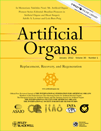Myocardial Contractility and Relaxation After Deep Hypothermic Circulatory Arrest in a Neonatal Piglet Model
Presented in part at the 6th International Conference on Pediatric Mechanical Circulatory Support Systems and Pediatric Cardiopulmonary Perfusion held May 6–8, 2010 in Boston, MA, USA.
Abstract
Cooling before circulatory arrest or ischemic arrest has been reported to influence myocardial performance in isolated neonatal hearts. The aim of the present study was to analyze indices of myocardial contractility and relaxation in an in vivo neonatal model after deep hypothermic circulatory arrest (DHCA). DHCA (18°C; DHCA group; n = 8) or mild hypothermic cardiopulmonary bypass ([MH-CPB] 32°C; MH-CPB group; n = 10) was applied in newborn piglets. After reperfusion (60 and 120 min), left ventricular dP/dtmax increased in DHCA and MH-CPB, while −dP/dtmax decreased slightly in DHCA and increased in MH-CPB. Nevertheless, the differences between the two groups did not reach statistical significance. In conclusion, left ventricular contractility remained stable after reperfusion following DHCA, to some degree at the expense of the diastolic function.




